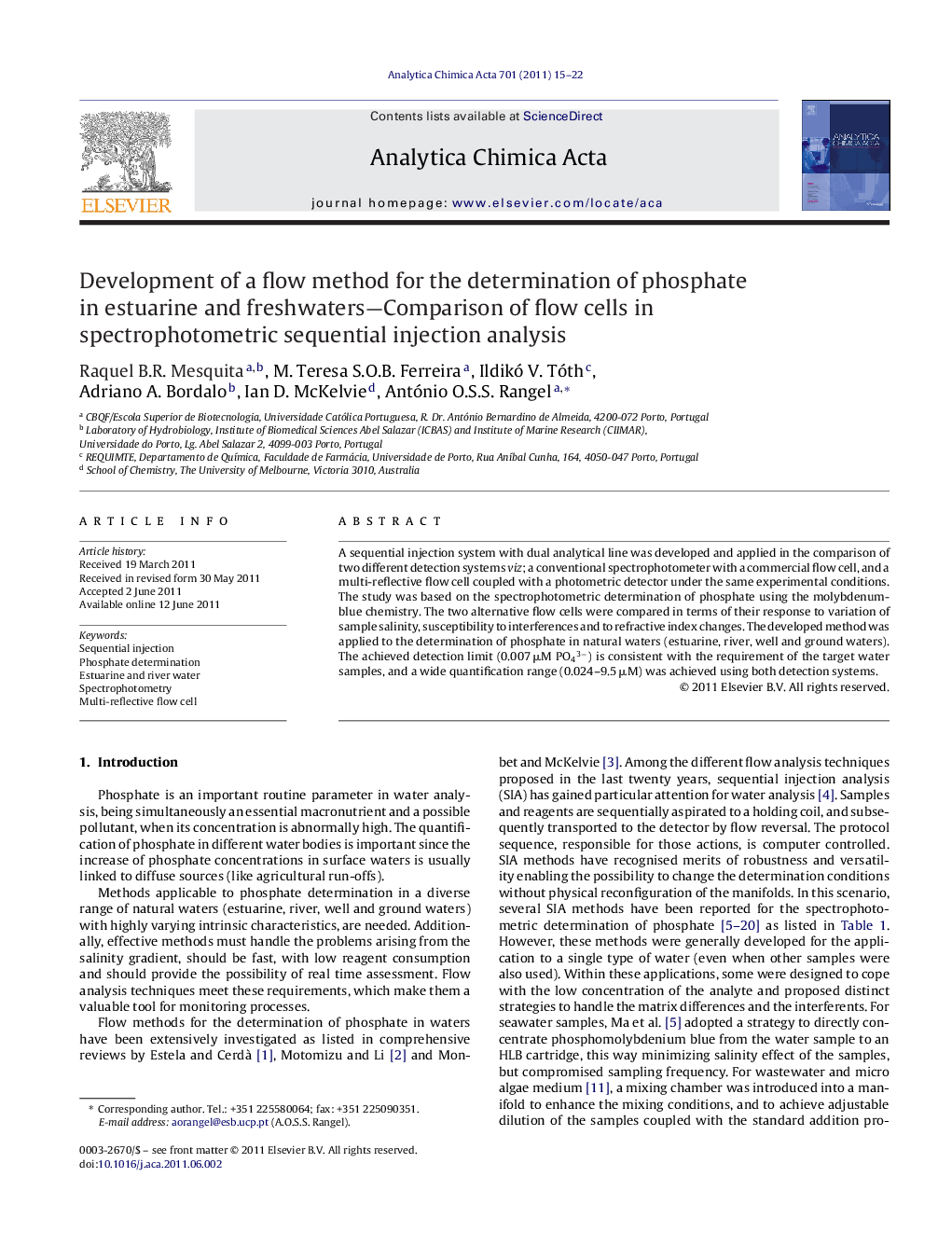| Article ID | Journal | Published Year | Pages | File Type |
|---|---|---|---|---|
| 1167035 | Analytica Chimica Acta | 2011 | 8 Pages |
A sequential injection system with dual analytical line was developed and applied in the comparison of two different detection systems viz; a conventional spectrophotometer with a commercial flow cell, and a multi-reflective flow cell coupled with a photometric detector under the same experimental conditions. The study was based on the spectrophotometric determination of phosphate using the molybdenum-blue chemistry. The two alternative flow cells were compared in terms of their response to variation of sample salinity, susceptibility to interferences and to refractive index changes. The developed method was applied to the determination of phosphate in natural waters (estuarine, river, well and ground waters). The achieved detection limit (0.007 μM PO43−) is consistent with the requirement of the target water samples, and a wide quantification range (0.024–9.5 μM) was achieved using both detection systems.
Graphical abstractFigure optionsDownload full-size imageDownload as PowerPoint slideHighlights► Sequential injection determination of phosphate in estuarine and freshwaters. ► Alternative spectrophotometric flow cells are compared. ► Minimization of schlieren effect was assessed. ► Proposed method can cope with wide salinity ranges. ► Multi-reflective cell shows clear advantages.
